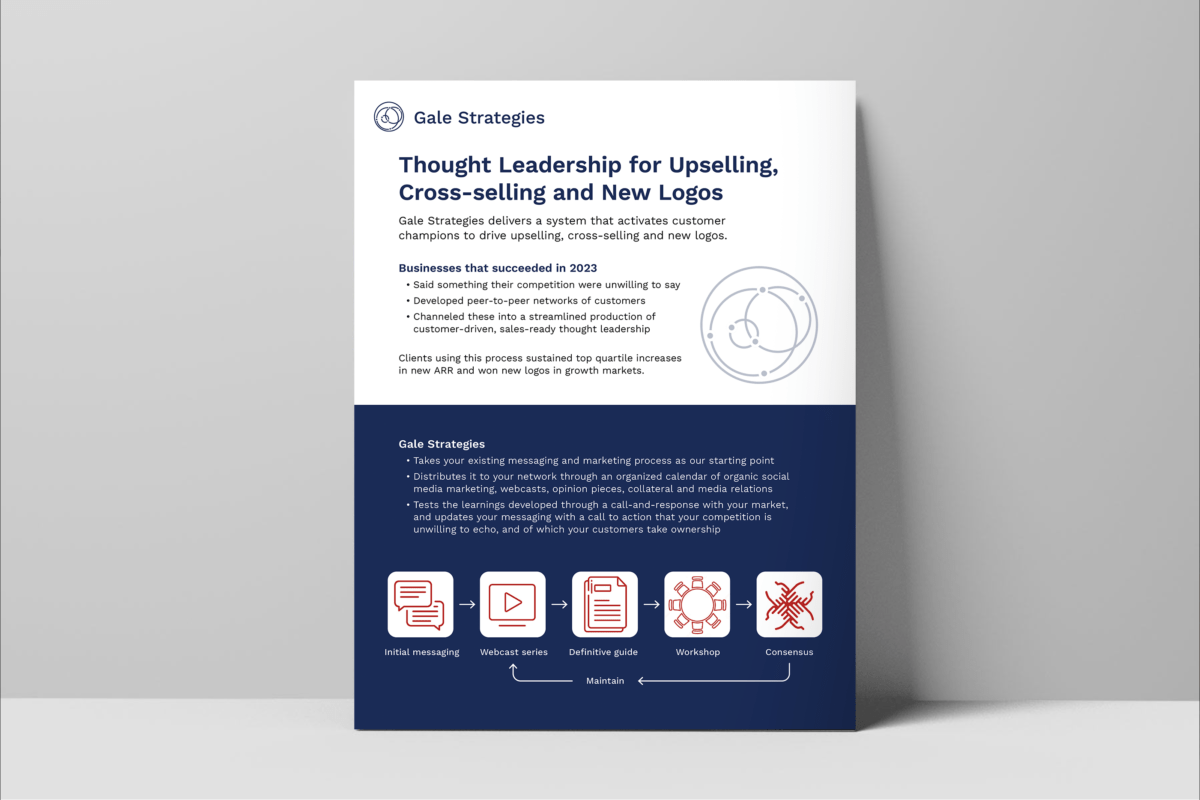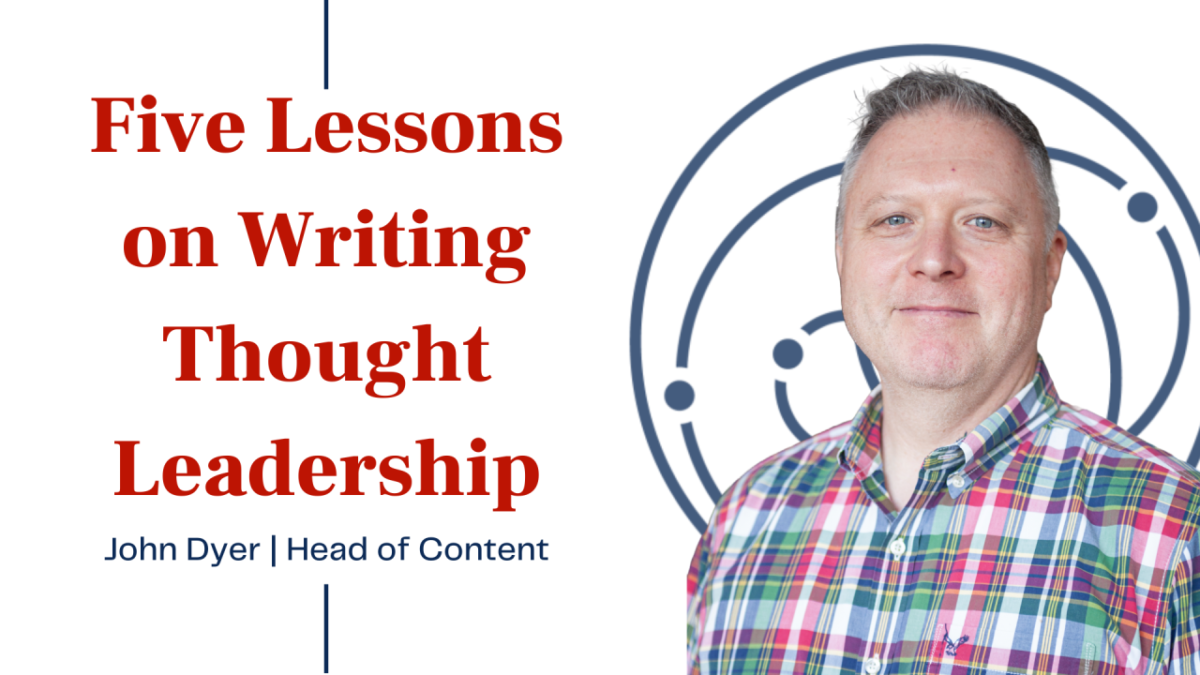Defining new markets by saying what others won’t
We’ve named our current webcast series The Definers to recognize our clients – and the webcast guests – who are defining the future of their industries through new business models and thought leadership. We specialize in helping these kinds of innovators articulate their market-shaping messages, explain their value propositions, and bring together movements in their industries that lead to sales.
We’ve noticed that some of the most successful market definers – both our clients and others – talk about their offerings in ways their competition can’t or won’t. This concept echoes Hamilton Helmer’s notion of counter positioning: when innovators adopt new business models that entrenched incumbents resist replicating because they’re afraid of what it will do to their existing business.
As Chris Gale, our co-founder, explained in the most recent Definers webcast, “Saying something your competition is unwilling to say or can’t say is powerful.” It contrasts with most corporate messaging, which generally focuses on the benefits that you bring to customers, but which competitors can also claim to bring as well. For this kind of messaging, it can start to matter less who is delivering those benefits better. Whoever has the most and best-organized resources to prove their value proposition and best amplify it wins.
But companies who can find (and it’s not easy to find) things your competition are unwilling to claim can demand fewer resources and get more attention than a more heavily resourced competitor might deploy. This isn’t easy to do. If it were, we’d all be doing it.
4Pines Fund Services is a perfect example. The guest on the latest webcast, 4Pines Co-Founder and CEO Mike Trinkaus, has worked closely with us to leverage a unique approach to financial and professional services – co-sourcing – as a calling card in the competitive market of fund administrators serving private capital firms.
“It has been a really interesting journey to watch what we’ve been able to do with Gale Strategies around certain aspects of the message that we want to get out there, and how that’s currently making its way through the market,” Trinkaus told Chris on the webcast.
Cornering the market on co-sourcing
In the financial industry, firms typically outsource their back-office functions to third-party fund administrators who take their data and render services like limited partner and regulatory reporting. This arrangement makes things easy for the private capital firm because the fund administrator worries about the software where the data lives. Nearly all the work is offloaded to another team.
The problem is, if the fund administrator is underperforming, one’s workflows, automations, and data are outside of one’s grasp. The switching costs are higher if firms want to change fund administrators, too. Many firms end up keeping a shadow set of books on their side, eating into the efficiencies they were seeking with outsourcing. Or they put up with lower quality service because the cost of switching is very high. That’s why many firms wait until a calamity compels them to switch.
When co-sourcing, in contrast, the third-party fund administrator works within the firm’s accounting and financial platform software. The vendor does the work, but the firm’s CFO always oversees the accounts, systems, and data therein. Private capital firms also retain all the workflow improvements and benefits from cleaning and better organizing their data. Frankly, it’s one of the reasons we practice a form of co-sourcing with our clients, where we track our work in our clients’ CRMs so that they possess the data.
“Co-sourcing is part of a broader vision that we have around the industry in and of itself, and where we think the industry needs to go and shift towards as the market changes and as the industry changes,” said Trinkaus. “We want to partner with our clients. We want to collaborate with our clients.”
As our case study on 4Pines explained, in addition to securing reporter interviews and other media opportunities, we produced the 4Pines Fund Services Definitive Guide to Co-Sourcing, numerous bylines, regular LinkedIn posts, and webcasts like The Definers to explore, discuss, and debate the merits of co-sourcing as financial instability, accountant shortages, and rapid technological roil the financial industry.
“We amplified what 4Pines started,” Chris said. “On one hand, co-sourcing is a simple concept. But its impact once you go down that road, it opens up a lot of different possibilities.”
These efforts have helped make 4Pines the authority on co-sourcing. “4Pines is the only fund administrator talking about co-sourcing so enthusiastically,” said Chris. “I’ve seen others quoted – ‘If clients want to do it, we can do it.’ But the 4Pines teams are evangelizers.”
Counter positioning 101
Prospective 4Pines’ clients have reached out to Trinkaus as a result of our efforts. The marketing campaign is still working today, we’d argue, because co-sourcing successfully counterposes 4Pines as a tech-savvy, forward-thinking firm against legacy fund administrators who onboard firms’ data and possess it forevermore on their proprietary, increasingly expensive, and antiquated software stacks. These legacy administrators, which are 4Pines’ competition, are unwilling to discuss co-sourcing as extensively precisely because it would replace the years of investments of time and money – the sunk cost invested in their current workflows. As Mike said, they simply aren’t built for it.
As any homebuilder will tell you, a new structure is always more straightforward than a retrofit.
Given the constraints and how private capital firms develop intertwined relationships with legacy administrators, many can’t leap into co-sourcing immediately. They are interested in it, however. These are future 4Pines customers.
“You have to enable commitment and be willing to admit that co-sourcing might not be the right solution necessarily for everyone immediately, but it may be the right solution for everyone eventually,” said Chris. “But you adhere to it because the results are going to speak for themselves.”
Recent developments have also helped strengthen 4Pines’ message, too. Regulators, for instance, have proposed more stringent measures to make sure firms safeguard their investors’ privacy and protect their data, a shift that bolsters the case for co-sourcing nicely in a variety of conversations and mediums.
We expect this trend to continue. 4Pines’ message on co-sourcing is a market definer, a simple concept that is clearly the next generation in fund administration. We foresee its value as a service to increase significantly as more private capital firms inevitably learn more about it.








